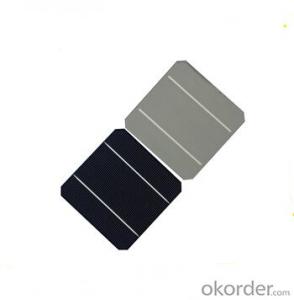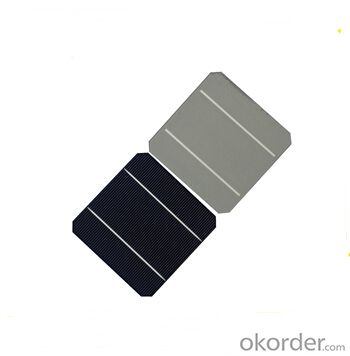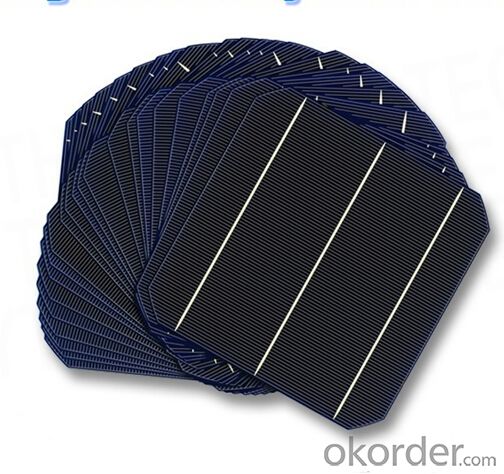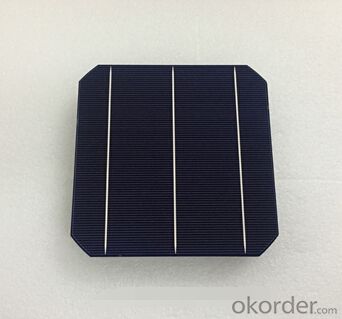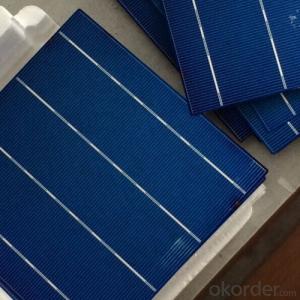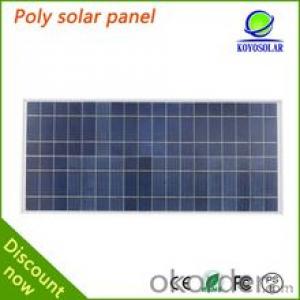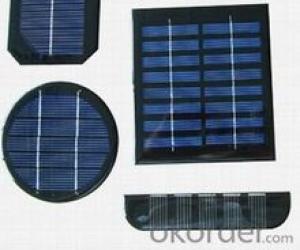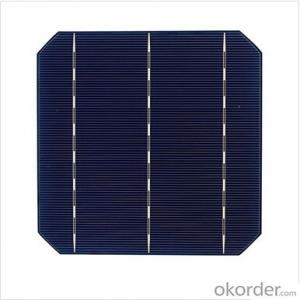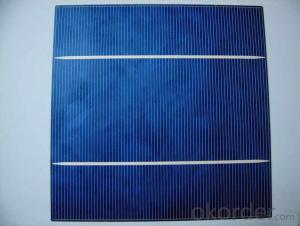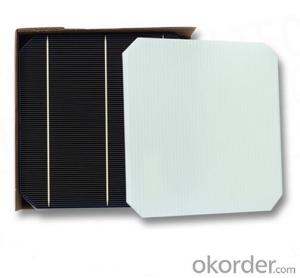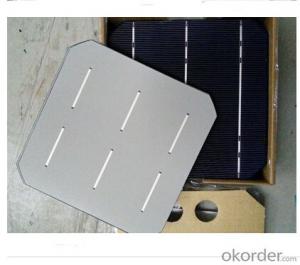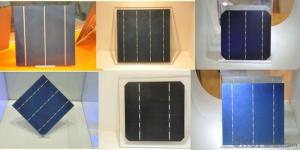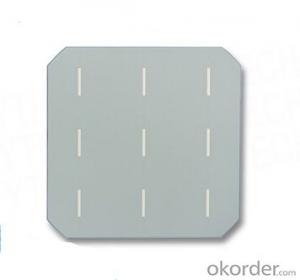More Efficient A-Grade 17.2% Monocrystalline Solar Cells
- Loading Port:
- Shanghai
- Payment Terms:
- TT OR LC
- Min Order Qty:
- 5000 pc
- Supply Capability:
- 8000000 pc/month
OKorder Service Pledge
OKorder Financial Service
You Might Also Like
Monocrystalline Solar Cells A GRADE
Solar cells is made by solar wafer, it has three categories of solar cell right now, monocrystalline polycrystalline and thin film,These cells are entirely based around the concept of ap-n junction, which is the critical part of solar module, it is the part that can convert the light energy into electricity, the thickness is from 180um to 200um, with even busbars to conduct electricity, textured cell can decrease diffuse reflection; they are often electrically connected and encapsulated as a module. Photovoltaic modules often have a sheet of glass on the front (sun up) side, allowing light to pass while protecting semiconductor wafers from abrasion and impact due to wind-driven debris, rain, hail, etc. Solar cells are also usually connected in series in modules, creating an additive voltage. Connecting cells in parallel will yield a higher current;With high quality and stable quality. Our Cells can greatly improve the performance of Solar Modules.
Advantage of Monocrystalline Solar Cells
• High efficiency and stable performance in photovoltaic conversion.
• Advanced diffusion technique ensuring the homogeneity of energy conversion efficiency of the cell.
• Advanced PECVD film forming, providing a dark blue silicon nitride anti-reflection film of homogenous color and attractive appearance.
• High quality metal paste for back surface and electrode, ensuring good conductivity, high pulling strength and ease of soldering.
• High precision patterning using screen printing, ensuring accurate busbar location for ease with automatic soldering a laser cutting.
Specification:
Efficiency (%) Pmpp (W) Umpp (V) Impp (A) Uoc (V) Isc (A) |
18.20% 4.43 0.536 8.263 0.634 8.712 |
18.00% 4.38 0.535 - 8.188 0.633 8.701 |
17.80% - 4.33 0.534 - -8.112 ---0.632 ----8.652 |
17.60% 4.28 0.533 8.036 0.631 8.641 |
17.40% 4.23 0.529 8.005 0.630 8.591 |
17.20% 4.19 0.525 7.973 0.627 8.542 |
17.00% 4.14 0.522 7.926 0.624 8.495 |
16.80% 4.09 0.518 7.893 0.620 8.452 |
16.60% 4.04 0.515 7.844 0.617 8.410 |
16.40% 3.99 0.514 7.765 0.616 8.373 |
16.20% 3.94 0.511 7.715 0.615 8.317 |
16.00% 3.89 0.509 7.650 0.613 8.251 |
Photovoltaic cell, also known as PV or solar cell, is created from semiconductor material such as silicon. The process of solar conversion is as below:
1) when light strikes the cells, a specific portion or "band" of the light wave is absorbed by the material;
2) that solar energy causes the semiconductor material to release electrons;
3)the semiconductor material is positioned within an electrical field by using negatively or positively charged silicon(n-type and p-type), so that all electrons set "free" from the material are forced to flow-generating electrical current.
Applications of Monocrystalline Solar Cells
Assemblies of photovoltaic cells are used to make solar modules which generate electrical power from sunlight, as distinguished from a "solar module" or "solar panel". A solar array generates solar power using solar energy.
Packaging & Delivery of Monocrystalline Solar Cells
Carton Box Package and Deliver by air. It should be noticed that it should be avoid of water, sunshine and moist.
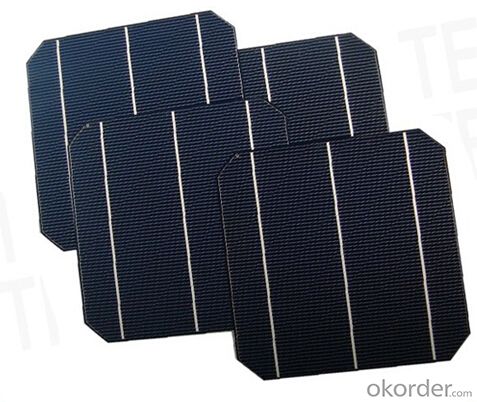
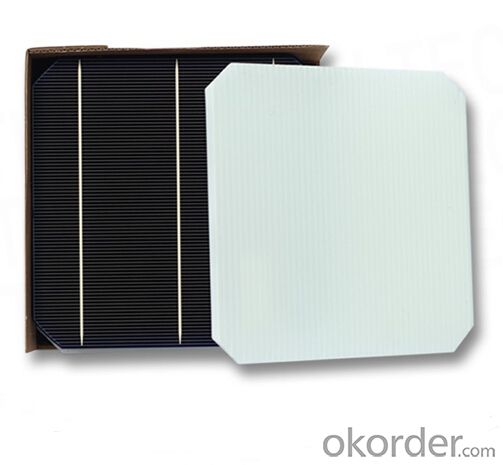
FAQ
We have organized several common questions for our clients,may help you sincerely:
1. What’s price per watt?
A: It’s depends on the quantity, delivery date and payment terms of the order. We can talk further about the detail price issue. Our products is high quality with lower price level.
2. Can you tell me the parameter of your solar cells?
We have different series of cells with different power output, both from c-si to a-si. Please take our specification sheet for your reference.
3. How do you pack your products?
We have rich experience on how to pack the panels to make sure the safety on shipment when it arrives at the destination.
4. Can you do OEM for us?
Yes, we can.
5. How long can we receive the product after purchase?
In the purchase of product within three working days, We will arrange the factory delivery as soon as possible. The perfect time of receiving is related to the state and position of customers. Commonly 7 to 10 working days can be served.
- Q: Can solar cells be used on curved surfaces?
- Yes, solar cells can be used on curved surfaces. In fact, advancements in technology have made it possible to design flexible solar cells that can be curved to fit various shapes and structures, allowing for more versatile and efficient use of solar energy.
- Q: What are thin-film solar cells?
- Thin-film solar cells are a type of photovoltaic technology that use thin layers of semiconductor materials to convert sunlight into electricity. These cells are lightweight, flexible, and can be manufactured using low-cost materials and techniques. They are commonly used in portable electronics, building-integrated photovoltaics, and other applications where traditional solar panels may not be suitable.
- Q: Can solar cells be used to power communication systems?
- Yes, solar cells can be used to power communication systems. Solar cells convert sunlight into electricity, which can be used to power various devices, including communication systems. This is especially useful in remote areas or during emergencies where access to traditional power sources may be limited. Additionally, solar-powered communication systems are environmentally friendly and sustainable.
- Q: Can solar cells be used in remote areas with no access to electricity?
- Yes, solar cells can be used in remote areas with no access to electricity. Solar cells convert sunlight into electricity, making them a reliable and sustainable source of power in areas where grid connectivity is absent. They are particularly well-suited for remote locations due to their portability, low maintenance requirements, and ability to generate electricity even in harsh environmental conditions.
- Q: How do solar cells perform in areas with frequent power outages?
- Solar cells can provide a reliable source of electricity in areas with frequent power outages. As long as the solar panels are exposed to sunlight, they can generate electricity and charge batteries, allowing for uninterrupted power supply even during blackouts. Additionally, solar power systems can be equipped with backup batteries, ensuring a continuous and reliable energy source even after sunset or during cloudy days. Overall, solar cells are a viable solution for areas prone to power outages, providing sustainable and independent electricity generation.
- Q: Anybody ever heard of solar roll flexible solar panel?
- Yes, I did. The solar cell has some specifies as below: Roll able amorphous thin-film solar cells for effective low-light performance Reverse flow protection Fluor polymer construction for extreme durability Link multiple like-units together for even more output
- Q: How do solar cells affect the value of a property?
- Solar cells can positively affect the value of a property by reducing energy costs, generating income through net metering or feed-in tariffs, and increasing its overall sustainability and appeal to potential buyers.
- Q: Can solar cells be used to power remote oil and gas monitoring systems?
- Yes, solar cells can be used to power remote oil and gas monitoring systems. Solar panels can convert sunlight into electricity, providing a reliable and sustainable energy source for these monitoring systems, especially in remote areas where access to traditional power grids may be limited or non-existent.
- Q: Can solar cells be used to power cars?
- Yes, solar cells can be used to power cars. Solar-powered cars utilize photovoltaic cells to convert sunlight into electricity, which can then be used to power the vehicle's electric motor. While solar-powered cars are still in development and face challenges such as limited energy storage and efficiency, they hold potential for reducing reliance on fossil fuels and minimizing greenhouse gas emissions.
- Q: What is the impact of solar cell installations on greenhouse gas emissions?
- The impact of solar cell installations on greenhouse gas emissions is significant as they provide a clean and renewable source of energy. By harnessing sunlight and converting it into electricity, solar cells reduce reliance on fossil fuels, which are major contributors to greenhouse gas emissions. Solar power generation produces no direct emissions during operation, thus helping to mitigate climate change and reduce overall carbon dioxide and other greenhouse gas emissions.
Send your message to us
More Efficient A-Grade 17.2% Monocrystalline Solar Cells
- Loading Port:
- Shanghai
- Payment Terms:
- TT OR LC
- Min Order Qty:
- 5000 pc
- Supply Capability:
- 8000000 pc/month
OKorder Service Pledge
OKorder Financial Service
Similar products
Hot products
Hot Searches
Related keywords
